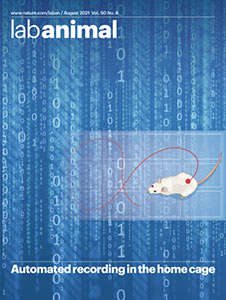
The current version of the Tecniplast website doesn't match your region. Please visit your local website to find information and offerings specific to your country.

The current version of the Tecniplast website doesn't match your region. Please visit your local website to find information and offerings specific to your country.


Sara Fuochi’s study on DVC® usage at Celasc 2023 in Prague
Sara Fuochi – DVM, PhD, MSc. GMO Data Manager; Head Mu28 Mouse Breeding Facility, Universität Bern
No doubt, CELASC was a resounding success! The three days were filled with eclectic presentations and workshops covering a wide range of topics, from zebrafish to rodents, facility design and management, animal welfare, and the 3Rs principles. The conference also emphasized the importance of education and training.
Beyond the variety and quality of the presentations, CELASC deserves great praise for skillfully bringing together such diverse realities in a well-organized and beautiful setting. The event provided a perfect opportunity for fostering internal and external networking with Central-East European FELASA member associations. Simultaneously, it offered valuable sessions for continuous professional development in the geographical area.
I believe that the entire organizing and scientific committee should be commended for achieving this excellent result. From a personal standpoint, I am eagerly looking forward to the second CELASC in Budapest in 2026!
Thank you! I thoroughly enjoyed my presentation at CELASC, and I was delighted with the constructive questions and feedback received from the audience.
During my presentation, I focused on the analysis of spontaneous in-cage activity in both inbred and outbred mice. I discussed how data repurposing from home cage monitoring can significantly enhance our understanding without duplicating in vivo analyses. Repurposing data allows us to find answers to new scientific questions, not just during peer review but also when new inquiries arise. This approach minimizes the need for redundant animal testing.
In our study, we had a specific question to address. Having previously characterized and published the diurnal activity patterns of mice, we aimed to determine the precise locations within the cage where this activity occurred. By repurposing previously published data and developing specific analytical metrics, we discovered a unique usage pattern of cage space by CD1 mice. This finding led us to consider the importance of hygienic concerns when stock housing outbred mice. Consequently, we suggested the need to update the minimum space requirements outlined in the EU Directive 63/2010.
 I am thrilled to share that the new data I presented at CELASC have been accepted for publication in Nature's Scientific Reports.
I am thrilled to share that the new data I presented at CELASC have been accepted for publication in Nature's Scientific Reports.
I extend my gratitude to all the partners involved in this research, including The University of Naples Federico II, the National Research Council of Italy, and Tecniplast.
It is worth noting that the original dataset was published in Nature’s Lab Animal in 2021.
DVC® is indeed a great tool. I built the majority of my PhD work on the motor phenotyping of wild type mice using DVC®, and I have become a great fan of the DVC® technology. Even now, I am still very fond of it. One challenge I had to deal with is the loss of details concerning position and movements when animals are group-housed. For example, trajectories cannot be tracked without avoiding single housing. I am looking forward to implementations in this regard, but for the time being, I can say that a well-designed metric, as described in the work on Scientific Reports, might help overcome this problem. When it comes to the pros, they are almost countless, and not just for researchers.
For example, DVC® can provide new insights into the clinical progression of diseases and support the detection of early scientific and humane endpoints. It can also generate alerts on cage conditions and hygiene, highlighting flooding events or low levels of water and food, and optimizing cage change frequency. Additionally, the large dataset generated can not only boost the robustness of a study due to longitudinal assessment but also, through data repurposing, it might even avoid the replication of some in vivo studies.
In my view, the enormous potential of DVC® to enhance refinement and reduction speaks for itself.
GIORGIO ROSATI
SENIOR PRODUCT MANAGER DIGILAB TECNIPLAST S.P.A.